Ecuador
Things to DO
Quito
The site of the capital city dates from pre-Hispanic times. The early inhabitants of the area were the peaceful Quitu people,
who gave their name to the city.
By the time the Spanish arrived in Ecuador in 1526, Quito was a major Inca city. Rather than allowing it to fall into the hands of
the Spanish conquerors, Rumiñahui, a general of Inca ruler Atahualpa, razed the city shortly before their arrival. There are
no Inca remains.
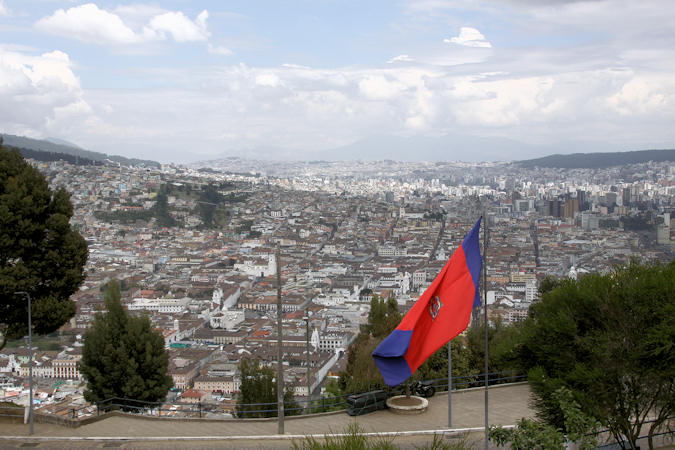 |
|||||
The present capital was founded on top of the ruins by Spanish lieutenant Sebastián de Benalcázar on december 6, 1534.
Colonists arrived, along with a host of religious orders (Fransiscans, Dominicans and Augustinians, among others), and built churches,
monasteries and public works, often with the labor of indigenous people.
Quito grew slowly during the 17th and 18th centuries but remained a backwater in comparison to Lima.
Revolutionary fervor swept through the city in the 19th century, and Quito became the capital of the newly formed Republic of Ecuador
in 1830.
Population growth and building projects transformed the city over the following century, with a new astronomical observatory (the first
in South America), a key rail line to Guayaquil boosting commerce, and other works. The colonial center remained the commercial haert of
the city until the post-WWII years, when yhe city experienced (as it does now) rapid growth and expansion, fueled in large part by work-seeking
immigrants arriving from all parts of Ecuador.
Topped by a 41m tall aluminum mosaic statue of La Virgin de Quito (completed in 1976), with a crown of stars angelic wings and chained
dragon, the hill to the south of old town called El Panecillo (the little Loaf of Bread) is a major Quito landmark. From the summit there
are marvelous views of the sprawling city and the surrounding volcanoes.
Old Town
With its narrow streets, restored colonial architecture and lively plazas, Quito's Centro Histórico is a marvel to wander. Built centuries ago by indigenous artisans and laborers, Quito's churches, convents, chapels and monasteries are cast in legend and steeped in history. It's a bustling area, full of yelling street vendors, ambling pedestrians, tooting taxis, belching buses and whistle-blowing police officers trying to direct traffic in the narrow one-way streets. The area is magical; it's a place where the more you look, the more you find.
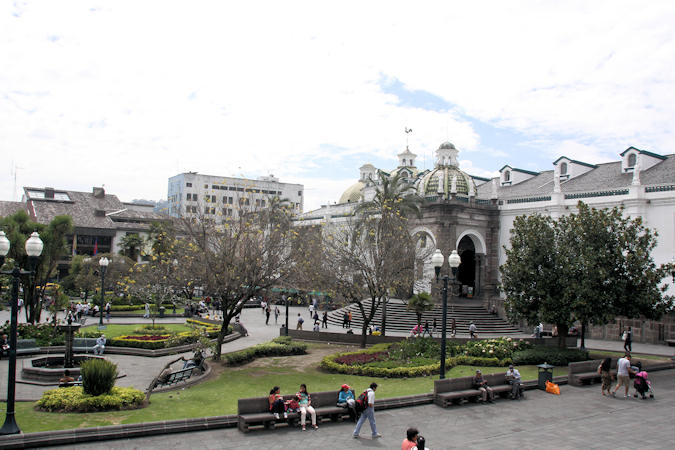 |
|||||
The heart of the old town is the Paza de la Independencia, (or colloquially known as Plaza Grande) a picturesque, palm-fringed
square surrounded by historic buildings and bustling with everyday life.
In the center of the plaza you will find the monument to Heroes de la Independecia, memorial built in the early twentieth century,
which symbolizes the triumph of the Republic against the Spanish colony.
On Plaza Grande's southwest side stands Catedral Metropolitana de Quito. Although not the most ornate of the Old Town’s churches, it
has some fascinating works by artists from the Quito School and houses the tomb of independence hero Antonio José de Sucre.
The Cathedral is a striking white-painted monumental church with a single high belltower offset to the right of the main entrance.
Just off plaza grande, the beautifully restored Centro Cultural Metropolitano houses the municipal libary and lecture rooms, and
host tempory art exhibitions.
The location is rich in history; it is supposedly the site of one of Inca ruler Atahualpa's palaces; a Jesuit school from 1597 to 1767;
an army barracks after the expulsion of the Jesuits in the late 1700s; and in 1809 the site at which royalist forces held a group of
revolutionaries, before murdering them a year later.
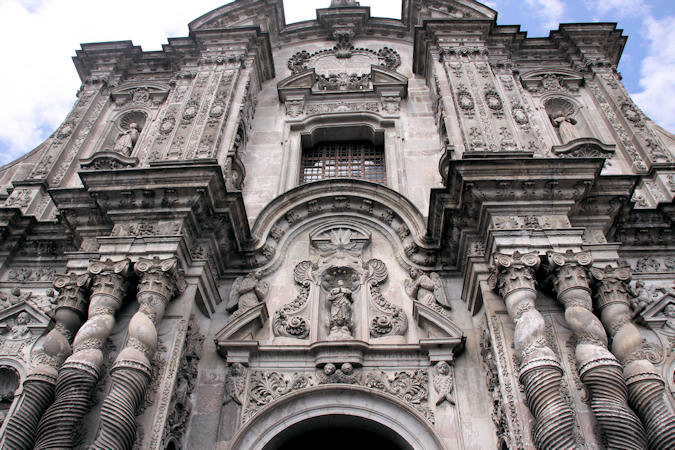 |
|||||
Capped by green-and-gold domes, La Iglesia de la Compañía de Jesús is Quito's most ornate church and a standout among the
baroque splenders of Old Town.
Constuctions on this marvelously gilded Jesuit Church began in 1605 but wasn't completed for
another 160 years.
Iglesia y Convento de San Francisco construction of the building began a few weeks after the founding of the city in 1534 and ended
in 1604.
The founder of the church was Franciscan missionary Jodoco Ricke. The building's construction began around 1550, sixteen
years after Quito was founded by Spanish conquistadors, and was finished in approximately 1680.
On a hill in the northeastern part of the Old Town looms the massive Gothic Church Basílica del Voto Nacional, built over several
decades beginning in 1892. Rather than gargoyles, however turtles and iguanas protude from the church's side.
New Town
Quito New Town includes Quito's business district, around the
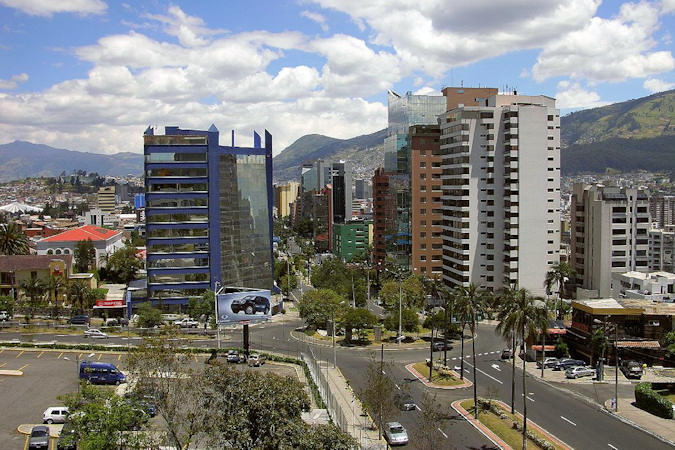 |
|||||
La Carolina Park (Parque La Carolina), where many of the
embassies and international corporations are located along with some of the smarter hotels.
Quito New Town also covers the La Mariscal area, between El Ejido Park and Avenida Colón, which is the main tourist area. La Mariscal
is full of hostals, hotels, internet cafes, travel agents, souvenir shops, laundries, restaurants and pubs. In short, everything a
backpacker could need to get started on (or recover from) their trip to Ecuador. If you don't speak any Spanish, this is the place to
base yourself as you are more likely to find English-speakers in this part of town.
Quito's Botanical Garden in the Parque La Carolina is an oasis of calm in the middle of the city. Exhibits of different habitats
showcase various flowers and plants along with quirky little plant facts and statistics (Ecuador has more plant species than all of Europe
put together; 1 in every 4 of Ecuador's plant species is an orchid). The Orchid Houses have a huge range of these beautiful flowers and
are also a great place to escape the rain if you are unlucky with the Quito weather or have timed your trip to Ecuador in the rainy season.
Antisana Ecological Reserve
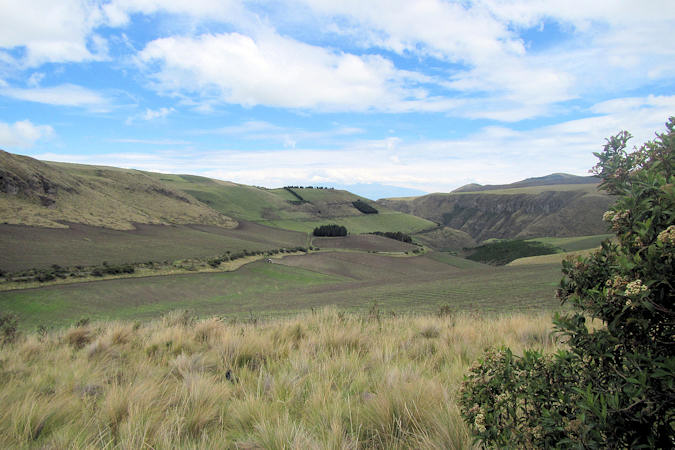 |
|||||
The Reserve is located in the oriental slope of the Andes Mountain Range, located about 1 hour drive east of Quito.
The Antisana Volcano with its 5.728 meters is one of the most important volcanoes in the Andes. The region includes the high river
basins of the rivers Coca and Napo that flows through the North and Southeast.
The protected area's purpose is to preserve native plant and animal wildlife in the Andean paramo, which is a habitat situated between
elevations of 3.600 m and 4.800 m and whose wildlife is highly adapted to the harsh conditions there. You can drive up to a lake,
4.000 meters high, through prairies, past ravines with tall vegetation, and over the paramo covered with pillow moss.
It is a wonderful adventure into the great outdoors. As for the birds you will see, the main ones are the Andean Gull, Caracara,
Ducks, different varieties of Hummingbird, and Andean condor, if you are lucky.
Mindo
If there's anything Mindo's about, it's the birds.
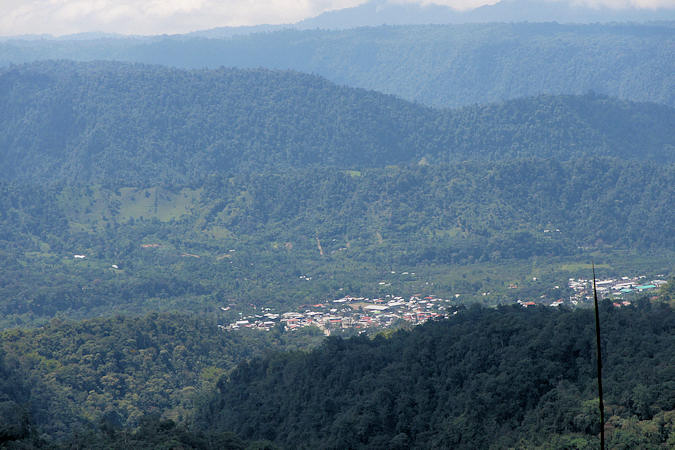 |
|||||
Did you notice the Andean cock-of-the-rock statue at the town entrance? Or the giant painted hummingbird in the central plaza?.
Birders come from around the globe te revel in the species density present in and around this very special valley.
With its lovely setting surrounded on all sides by forested mountains, this pint-sized pueblo has become a deservedly popular
destination for backpackers as well
The area includes parts of the remaining swath of the Choco-Andean Forest, a corridor that extends to parts of Colombia, southern
Panama and the Ecuadorian coast. Its flora and fauna, still relatively unmapped, are threatened by logging, slash-and-burn agriculture and
water pollution, the same scourges that have decimated wildlife habitats elsewhere.
The reserves themselves, at around 500 m to 1.400 m, are technically in tropical cloud forest and receave a whopping 2.525 mm of rain
annually with an average daily humidity of 85% to 95%.
Bellavista Lodge
Although the name 'Mindo' is magic to the nature lover's ear, many of the more specialized and high-end lodges are located a bit
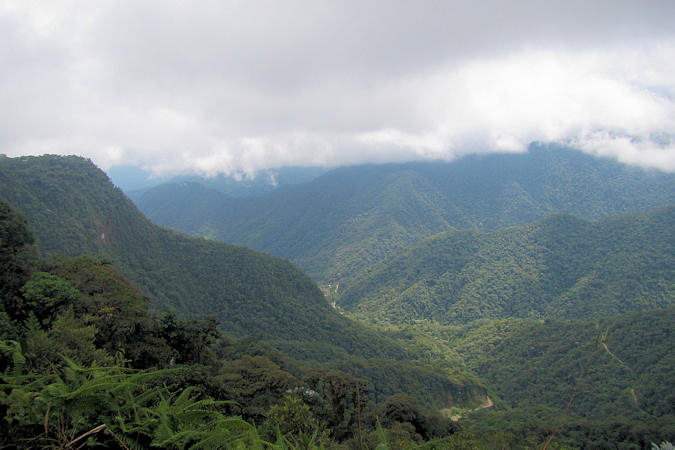 |
|||||
outside the town itself, up and down the slopes of the cloud forest between Mindo and the capital Quito.
It's worth spending a night or two at Bellavista Lodge, if only for the jaw-dropping panoramic vieuws from its wooden geodesic dome
lodge.
This reserve is on the western Andean slopes, about one hour drive east off Mindo, at about 2.000 m above sea level.
About 25% of it is primary
forest, and the rest has been selectively or completeley logged but is regenerating. It was one of the first ecotourism projects in the area,
and various conservation projects are always underway.
There are 8 km of well marked trails, and the area is highly recommended by bird-watchers (320 species of birds have been recorded).
The first recorded Olinguito, a recoon-like mammal new to science, was recorded here in 2013. It was the first new mammal
'discovered' in 35 years.
Lago Agrio
An infamously dangerous and unattractive city, Lago Agrio’s main tourist
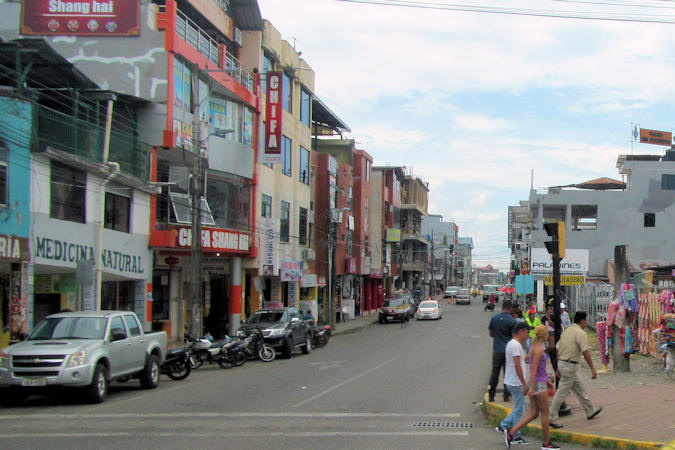 |
|||||
draw is its proximity to the Amazon Rainforest. It dangerous
there and it's best to avoid spending unnecessary time in Lago Agrio or wandering outside of designated drop-off and pick-up
areas
Nueva Loja (new Loja) was sparsely settled by colonizers who came directly from the southern Ecuadorian province of Loja. When they
arrived in the Amazon, they named the site after the colony they had just established.
In the 1960s, Nueva Loja mushroomed in size and importance, as a base camp for the US oil company Texaco. According to some sources, the
city was then called Source Lake, but was later changed to Lago Agrio (sour lake) because foreign oil workers suffered from long work
days and strenuous working conditions.
The area has experienced dramatic environmental degradation in the following decades. Despite – or perhaps because of – Lago Agrio’s
industrial importance today, its ecology has been terribly mismanaged, mostly at the hands of foreign oil companies.
From Quito to Lago Agrio
The road from Quito to Lago Agrio traverses the misty Andean slopes before descending into the lowlands of Amazonía. If you're not flying to Lago Agrio or Cuenca for you're Amazonian trip, this journey can be done in one long day by road, or enjoyed in stages with stops for bird-watching, white-water rafting or a visit to the San Rafael Falls.
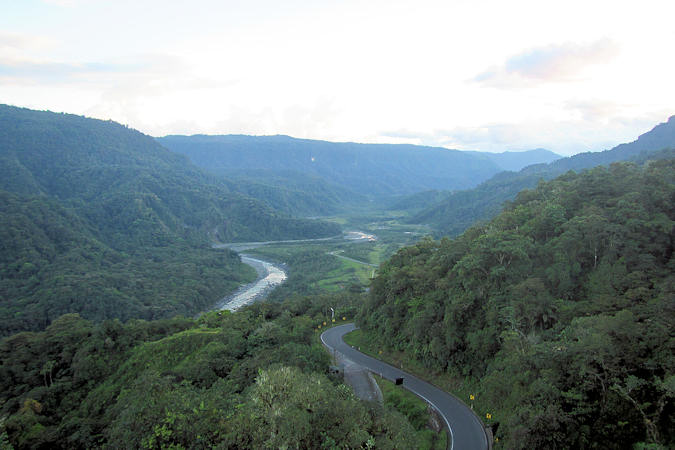 |
|||||
Ecuador's highest waterfall is spectacular 131 m. San Rafael Falls. While this incredible waterfall is at its powerful best in the
winter, a hydroelectric dam and power plant 20 km. upriver, completed in 2016, reduces the flow by half during the summer months.
The power plant issue polarized the country, which, since the election of former President Rafael Correa in 2007, has actively
sought to expand Ecuador's sustainable energy production.
Volcán Raventador is an active stratovolcano which lies close to the waterfalls. Since 1541 it has erupted over 25 times, although
its isolated location means that many of its eruptions have gone unreported. Its most recent eruption began in 2008 and is ongoing as of
July 4, 2017.
The largest historical eruption occurred in 2002. During that eruption the plume from the volcano reached a height of 17 km and pyroclastic
flows went up to 7 km from the cone.
Raventador (3.562 m) is currently Ecuador's most active volcano, belching out smoke and boulders several times hourly.